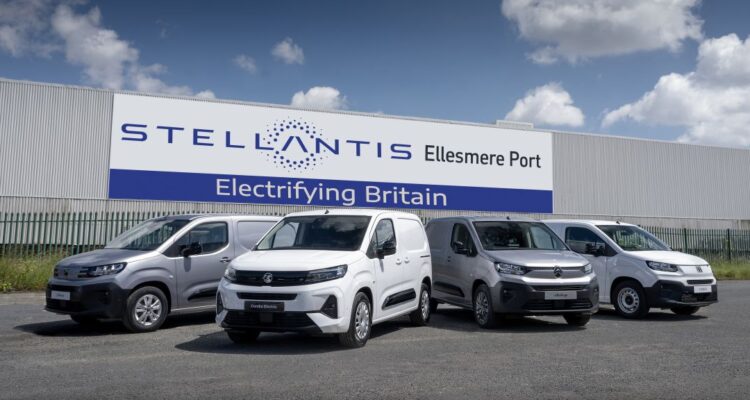Stellantis, one of the world’s largest automotive manufacturers, has been vocally opposing any changes to the European Union’s 2025 CO2 emissions targets. As the regulatory landscape surrounding climate goals tightens, companies across the auto industry are under increasing pressure to transition towards greener technologies. Yet, Stellantis, led by CEO Carlos Tavares, believes that shifting the existing targets is not the right move for the industry or the broader economy.
In understanding the company’s stance, one must explore Stellantis’ strategic plans, the competitive landscape, and the implications for other automakers if these targets remain unchanged.
Carlos Tavares has repeatedly expressed concerns about potential changes to the 2025 CO2 emissions targets, seeing them as unnecessary given the progress already made by automakers. Stellantis has been aggressively investing in electric vehicles (EVs), hybrids, and other clean technologies, aiming to ensure compliance with these stringent regulations.
During an industry event in 2023, Tavares emphasised that Stellantis is well on its way to meeting the goals without the need for regulatory changes. He was quoted as saying:
“We have been preparing for this for years, and we have a roadmap that is aligned with these targets. Changing the rules at this stage would only cause confusion and disrupt the progress we’ve made.”
This is a critical point, as Stellantis, through its commitment to electrification, feels that moving the goalposts could place undue strain on an industry already facing challenges such as supply chain disruptions and inflationary pressures.
One of Stellantis’ primary concerns is the economic impact of changing the targets. As Tavares pointed out, making abrupt adjustments to established CO2 goals could destabilise the industry’s trajectory, requiring further costly investments that could hinder long-term profitability.
Tavares argues that some automakers, especially those that are already struggling to transition to greener vehicles, would be disproportionately affected. He said, “Changing the CO2 targets now would lead to uneven competition. Those who’ve invested heavily and acted early, like Stellantis, would be penalised, while others might not feel the same urgency to innovate.”
In other words, automakers who have lagged in their investments towards electric and hybrid vehicle technologies could find themselves benefitting from regulatory shifts, potentially creating an uneven playing field. This could allow slower players to catch up without making the same sacrifices or investments as industry leaders like Stellantis.
If Stellantis succeeds in its opposition to changing the CO2 targets, the implications for other EU motor manufacturers are significant. First, companies that have yet to aggressively pursue electrification will face even greater challenges in meeting the 2025 deadlines. Those automakers will need to make rapid adjustments to their vehicle portfolios, including ramping up EV production and shifting away from internal combustion engines (ICEs).
For smaller or less capitalised manufacturers, this could pose an existential threat. As Tavares highlighted, the transition to EVs is costly, and many in the industry are not fully prepared:
“Electrification is a high-cost transition, and only those with the financial strength and vision to adapt quickly will survive in this environment.”
Larger automakers, particularly those with more resources like Stellantis, are likely to see a competitive advantage in keeping the existing CO2 goals. In fact, maintaining the targets could push consolidation in the industry, with smaller players potentially forced to merge or exit the market altogether.
However, the success of Stellantis in opposing the CO2 target changes could also lead to greater innovation. With stringent targets firmly in place, automakers would have little choice but to ramp up their investments in new technology, accelerating the transition to electric vehicles across the board. In turn, this could help the EU meet its broader climate goals more rapidly.
Stellantis’ position as one of the largest automotive groups, formed from the merger of PSA Group and Fiat Chrysler Automobiles, puts it at the forefront of the industry. Its leadership, both in terms of market share and technological advancement, allows it to navigate stricter emissions regulations more effectively than many of its competitors.
The company has already committed to an all-electric future, with plans to have 100% of its European passenger car sales be battery electric vehicles (BEVs) by 2030. By opposing any changes to the 2025 CO2 emissions goals, Stellantis is signalling its confidence in its roadmap and its desire to stay ahead of the curve.
For Stellantis, the opposition to modifying the 2025 CO2 emissions targets is both a strategic move and a declaration of its leadership in the EV revolution. Carlos Tavares has been clear in his assertion that the existing targets are achievable for those who have prepared, and changing them would only serve to create confusion and potentially stall innovation.
If Stellantis gets its way, the pressure will intensify for automakers across Europe. Some may struggle, others may thrive, but one thing is certain: the future of the European automotive industry will be shaped by its ability to meet the demands of an increasingly electrified world, with Stellantis leading the charge.
Author: Mark Salisbury, Editor, Fleetpoint




















